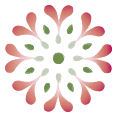What Is Halotherapy?
Halotherapy, or salt therapy, involves breathing in air with tiny salt particles to improve your breathing. Halotherapy is considered an alternative treatment for lung problems such as asthma, bronchitis, and cough.Halotherapy is often done in spa-like salt rooms. This therapy can also help you relax and may help with skin conditions and allergies.
In the 12th century, the practice of visiting salt caves for therapeutic reasons, or speleotherapy, was common in Eastern Europe. In the 1800s, salt miners in Poland found a more modern version of what’s now halotherapy. Despite working in mines all day, the Polish miners didn’t have any respiratory conditions and were unusually healthy. They weren’t likely to get the colds or coughs that were common among other people.
Research showed that the salty air the miners breathed helped keep their lungs free from infection and allergies. Over time, Eastern European salt mines or caves became popular tourist destinations. People from all over the world visited to inhale the salty air and ease their lung problems.
Salt therapy is usually done in salt rooms, which can be active or passive.
- Active salt room. This room has a machine called a halogenerator, to which salt is added. The equipment breaks down the salt into tiny particles that circulate in the room.
- Passive salt room. This type of room does not have a machine to break down the salt. Instead, the room is filled with different types of salts, such as Himalayan salt. It looks like a salt cave, with controlled temperature and humidity.
The salt concentration in passive salt rooms is lower than in active salt rooms. These rooms are usually used for relaxation and meditation rather than halotherapy.
Salt therapy itself has two types.
- Dry salt therapy. This type is the kind known as halotherapy. It is done in active salt rooms with the help of a halogenerator. This allows the small, dry salt particles to spread in the air and enter your lungs and skin.
- Wet salt therapy. This involves bathing in salty water containing minerals, gargling with or drinking salty water, or passing salty water through your nasal canal.
Studies have found that halotherapy can have benefits for respiratory conditions, skin problems, and allergies.
Salt is a natural and safe ingredient. It does not have any notable side effects. It is also:
- Mucoactive, clearing up mucus from your airways
- Antibacterial, helping prevent infections
- Anti-inflammatory
- Immunity-boosting
- Anti-allergic
Research has found that because of these properties, halotherapy can be used as part of the treatment of:
- Lung infection
- Throat infection or pharyngitis
- Chronic obstructive pulmonary disease (COPD)
- Smoking-related breathing problems
- Respiratory allergies
- Asthma
- Bronchitis
- Cold or cough
- Pneumonia
- Sinusitis
- Rhinitis
- Tonsillitis
- Cystic fibrosis
Halotherapy can also be used to treat breathing problems caused by COVID-19, improving your breathing and the amount of oxygen in your blood.
Tiny salt particles used in halotherapy can also help repair your skin cells and protect your skin from aging and infection. This therapy can be used to treat:
- Acne and rosacea
- Skin allergies
- Rash
- Eczema
- Psoriasis
- Dermatitis
- Fungal infection such as onychomycosis
- Wrinkles and signs of aging skin
Halotherapy can have some side effects. You may have coughing and more mucus secretion because your nasal passages are clearing out. Rarely, you may notice skin irritation or conjunctivitis, or pink eye.
Avoid halotherapy if you have:
- Hyperthyroidism
- High blood pressure (hypertension)
- Tuberculosis
- Heart problems
- Respiratory failure
- Blood disorders like anemia, hemophilia, or clotting
- Infectious diseases
- Fever
- Open wounds
- Malignant diseases such as cancer
- Claustrophobia
Talk to your doctor before trying halotherapy. They can help you decide if it’s a good option for you based on your medical history and condition.
Source




